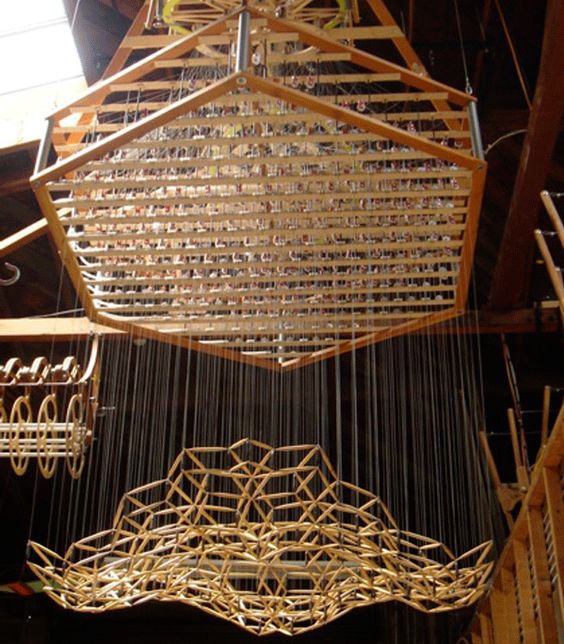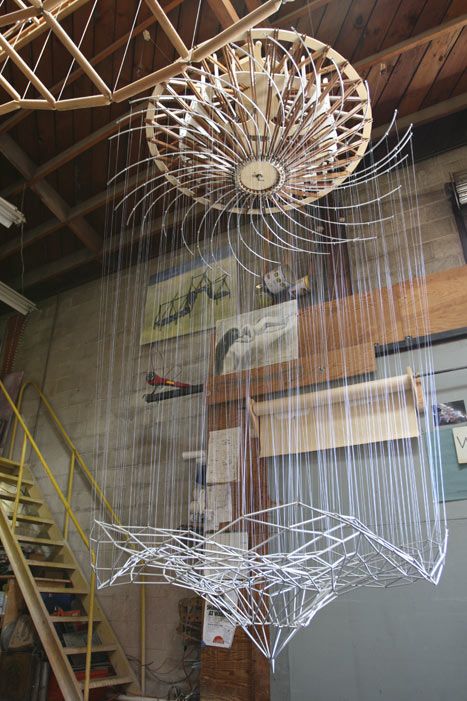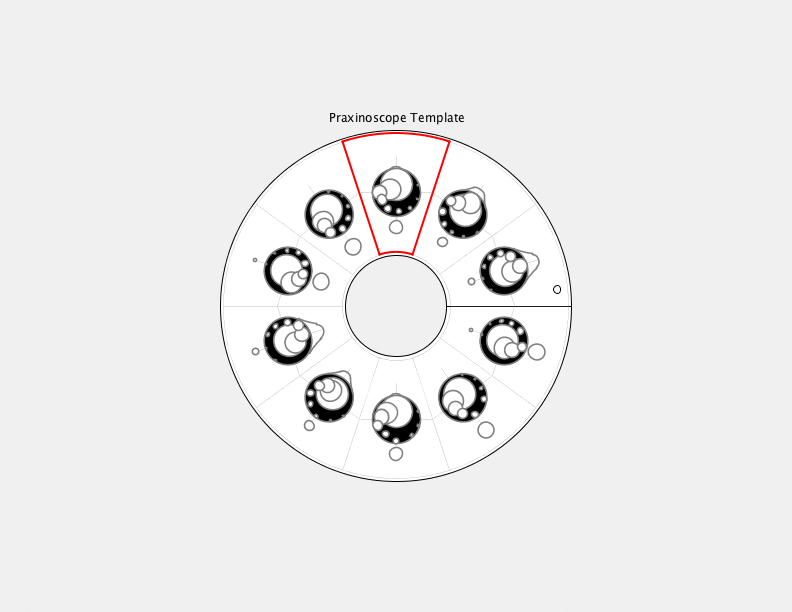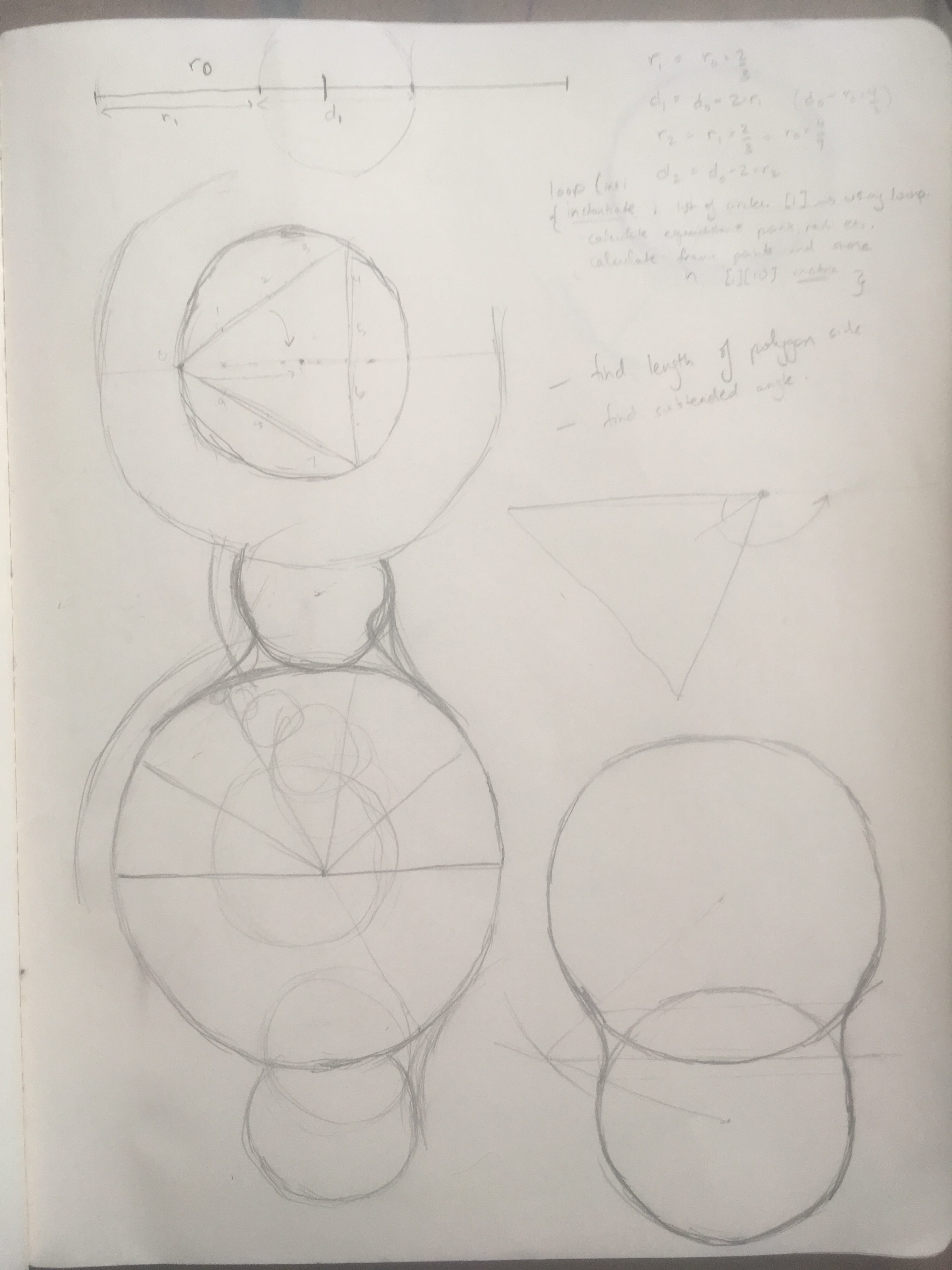thabir – LookingOutwards04


The artist I chose to write about this week is a sculptor named Reuben Margolin, specializing in kinetic sculpture. Never having been to art school (but being trained in painting in two different schools of technique), Margolin’s work seems naive to the discussions and discourse of the art world, instead focussing on the singular issue of observation vs representation. Having graduated with a major in english, after having partially studied math, geology, and anthropology, Margolin was first drawn to kinetic sculpture when he observed the sinusoidal motions of a caterpillar. The representation of this form of cyclical motion, among others, plays an important part in his work.
Margolin’s sculptures are all mostly made of wood dowels and pulley systems, hang from the ceiling, and are in some sort of sinusoidal motion. His first sculptures literally seem like manifestations of caterpillars (such as the one in the gifs below). He then started making planar and circular waves, such as the ones above. Many of his sculptures model other cyclical motions such as the falling of drops into a water body, or the motion of running water around a paddle. In this respect, they actually remind me of the work we were looking at in the animation and loops week, since they seem to be using a physical analogue to easing functions to make motion feel organic.



In the talk linked below, Margolin goes into detail about the evolution of his process as well as his motivations. He talks about how he gains inspiration from the desire to represent cyclical motion in the form of sinusoidal models. Each of his sculptures is, in a way, his method of understanding the world outside him and trying to bring order to his senses. He then goes on to further develop this distinction by drawing the contrast between the Charles Cecil Studios in Florence and the Imperial Academy of Arts in St Petersburg. In the former, he was taught to observe the world through the play of light, and reproduce exactly what he saw. In the latter, he was taught how to build up his subject structurally from what he knows to be true about it, focussing on a sense of mass and solidity.
For him, these two approaches represent the two ways of viewing the world. One relies on the senses, focussing on what makes itself observable to us, while the other is an act of questioning, where we attempt to superimpose a model on the world as it exists: observation vs representation. I found this to be uncannily similar to the concept of my clock from last week, where I was exploring the difference between the human abstraction of cyclically recurring time units and the actual cyclical events these units were meant to measure. Margolin’s work also lies within this dialectic of the viscerality of motion vs its underlying order. This was one of the main reasons that this project struck me. Also, the slow, cyclical motions and the intricate machinery of each sculpture makes it absolutely mesmerizing to watch.
Before posting this, I wondered for a while whether this body of work could truly be categorized under the heading of new media art. It is completely analog and could technically have been build in the 19th century. However, I thought back to the reading by Philip Galanter and remembered that a work was generative whenever it handed over autonomy to a process that could in essence be simulated by code. And then I realized that all of the elaborate wood constructions were merely an analog way for Margolin to set up his system, design his algorithm, write his code, and that by setting the mobile in motion, he is essentially “running” his structure, handing over autonomy to a combination of sinusoidal waves of varying periods which could most definitely be represented using code. Therefore, in my opinion, this does in fact fall under the umbrella of generative art, even though it is completely analog.



